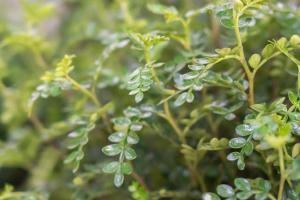How to Over Winter Potted Plants
As winter approaches, many gardeners are justifiably concerned about the survival of their potted plants. Whether you're growing herbs, flowers, or vegetables in containers, there are a few important steps you can take to help your plants make it through the colder months. Here's what you need to know:
Step 1: Choose the Right Planters
The first step in over wintering potted plants is selecting the right containers. Plants need to be able to breathe and drain properly, so it's important to choose pots with drainage holes and sufficient air circulation. Avoid plastic containers, as they can retain moisture and cause root rot. Instead, opt for clay or ceramic pots, which allow for better air flow and drainage.
Step 2: Inspect Your Plants
Before you bring your potted plants indoors for the winter, give them a thorough inspection to ensure they're healthy and pest-free. Remove any dead or yellowing leaves, and check for signs of insects or disease. It's best to treat any problems before bringing your plants inside, as indoor pest infestations can quickly spread to other plants in your home.
Step 3: Bring Plants Indoors Gradually
When it's time to bring your potted plants indoors for the winter, do so gradually to help them adjust to the change in temperature and lighting. Start by bringing them inside for a few hours a day in a location that receives bright, indirect light. Gradually increase the amount of time they spend indoors over the course of a few weeks.
Step 4: Provide Adequate Lighting
Indoor plants need sufficient light to photosynthesize and produce energy. Keep your potted plants near a window that receives bright, indirect light, or provide them with artificial lighting. You can purchase grow lights or fluorescent bulbs designed for indoor plants, and use a timer to ensure your plants get the right amount of light each day.
Step 5: Adjust Humidity Levels
Cold, dry winter air can be tough on potted plants, as it can cause leaves to curl or brown at the edges. To prevent this, adjust the humidity levels around your plants by spritzing them with water, using a humidifier, or placing them on a tray of pebbles with water in it. This will help keep your plants healthy and looking their best throughout the winter months.
Conclusion
With these tips, you can help your potted plants survive the winter and thrive when spring rolls around. Remember to choose the right containers, inspect your plants for pests and disease, bring them indoors gradually, provide adequate lighting, and adjust humidity levels as needed. When your plants are well cared for, you'll be rewarded with vibrant, healthy specimens that are ready to be enjoyed year after year.

 how many times do yo...
how many times do yo... how many planted tre...
how many planted tre... how many pine trees ...
how many pine trees ... how many pecan trees...
how many pecan trees... how many plants comp...
how many plants comp... how many plants can ...
how many plants can ... how many plants and ...
how many plants and ... how many pepper plan...
how many pepper plan...
































